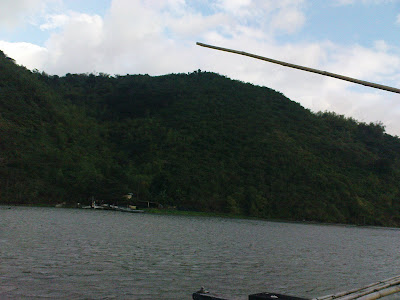HOW DID the towns in the Philippines get their names?
Because the Spaniards are saying one thing and the natives another. The former could never get their nga's and ing's right, and many of the latter keep interchanging their e's and i's. Or local historians and story-tellers have run out of original ideas and are copying each other.
So, when a roving band of Spaniards, came upon a village at the mount of the Obong Spring and they saw a woman washing clothes in the flowing waters, they asked her what the name of the village was. Dalakit, the woman said, referring to the huge balete standing nearby. The tree is known in the locality as dalakit, or dakit. And this was how Dalaguete got its name.
Under the Spaniards, the natives built the baluartes or watchtowers at Obong that protected the town from the marauding Moros. Built in the late 1700s and early 1800s, there were three watchtowers referred to as Bantay Moros that formed part of a series of defensive fortifications erected by Fray Julian Bermejo, the Augustinian priest who was also called "Padre Kapitan". The baluartes were strategically placed along the southern flank of the island, from Carcar to the north Santander to the south.
One baluarte, rehabilitated in the 1970s and given a pavilion-like addition, is now a town landmark, referred to as the kiosko. Another landmark is Dakung Bato in Barangay Coro. This stone promontory served as the entrance to Dalaguete in the old days.
Because the Spaniards are saying one thing and the natives another. The former could never get their nga's and ing's right, and many of the latter keep interchanging their e's and i's. Or local historians and story-tellers have run out of original ideas and are copying each other.
So, when a roving band of Spaniards, came upon a village at the mount of the Obong Spring and they saw a woman washing clothes in the flowing waters, they asked her what the name of the village was. Dalakit, the woman said, referring to the huge balete standing nearby. The tree is known in the locality as dalakit, or dakit. And this was how Dalaguete got its name.
Under the Spaniards, the natives built the baluartes or watchtowers at Obong that protected the town from the marauding Moros. Built in the late 1700s and early 1800s, there were three watchtowers referred to as Bantay Moros that formed part of a series of defensive fortifications erected by Fray Julian Bermejo, the Augustinian priest who was also called "Padre Kapitan". The baluartes were strategically placed along the southern flank of the island, from Carcar to the north Santander to the south.
One baluarte, rehabilitated in the 1970s and given a pavilion-like addition, is now a town landmark, referred to as the kiosko. Another landmark is Dakung Bato in Barangay Coro. This stone promontory served as the entrance to Dalaguete in the old days.
The town's beginnings started as an extension of the Carcar Parish in 1690. It became an independent parish in 1711, but it was not until 1802 that a more permanent building was started. Just like the church in Oslob, the church dedicated to San Guillermo de Aquitania is earthquake-baroque architecture characterize by flying buttresses on both side with a facade divided into three levels by cornice stone moldings. The pediment, adorned with finials, has a central niche and a small circular window that served as a lookout.
These days, visitors go to Dalaguete for 2 things, to bathe in the clear waters of Obong Spring, or to go up the highlands of Mantalongon, a barangay located a few hours drive away. Considered the vegetable basket of Cebu. Mantalongon's fairly cool climate is ideal for growing lettuce, tomatoes, cabbages, carrots as well as herbs and other nursery plants. Mantalongon is also a well-hidden secret as a favorite weekend destination for most city folks nowadays who find the lure of misty mornings and cold weather a refuge from the heat of the city.
These days, visitors go to Dalaguete for 2 things, to bathe in the clear waters of Obong Spring, or to go up the highlands of Mantalongon, a barangay located a few hours drive away. Considered the vegetable basket of Cebu. Mantalongon's fairly cool climate is ideal for growing lettuce, tomatoes, cabbages, carrots as well as herbs and other nursery plants. Mantalongon is also a well-hidden secret as a favorite weekend destination for most city folks nowadays who find the lure of misty mornings and cold weather a refuge from the heat of the city.







































